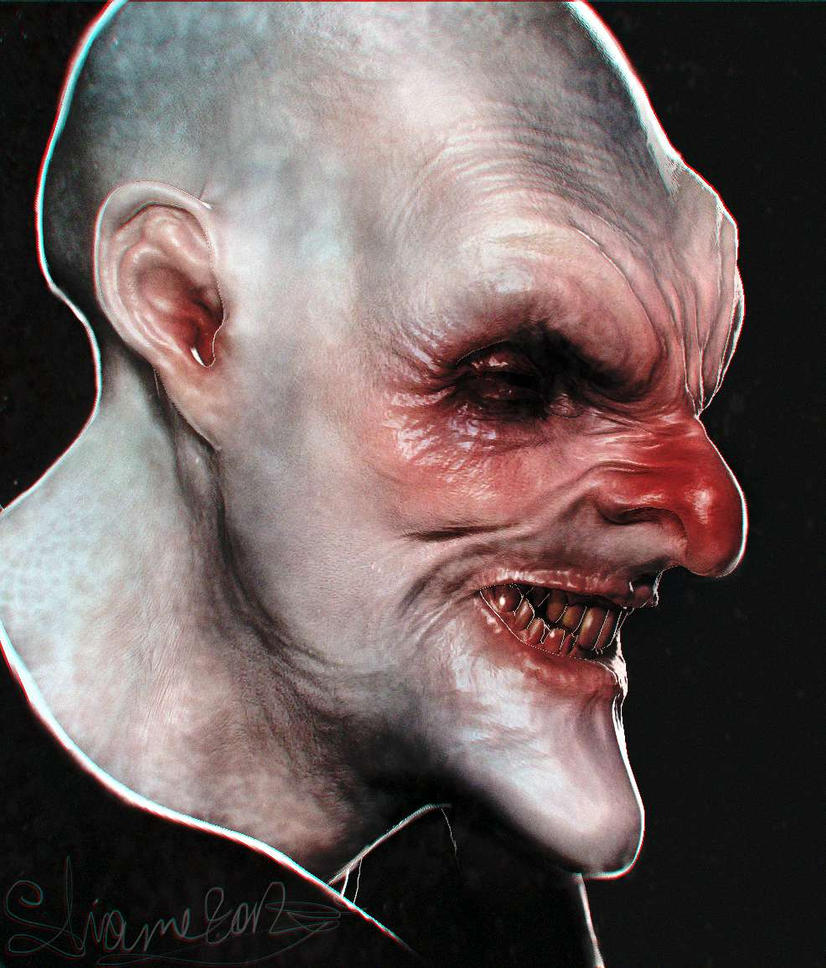
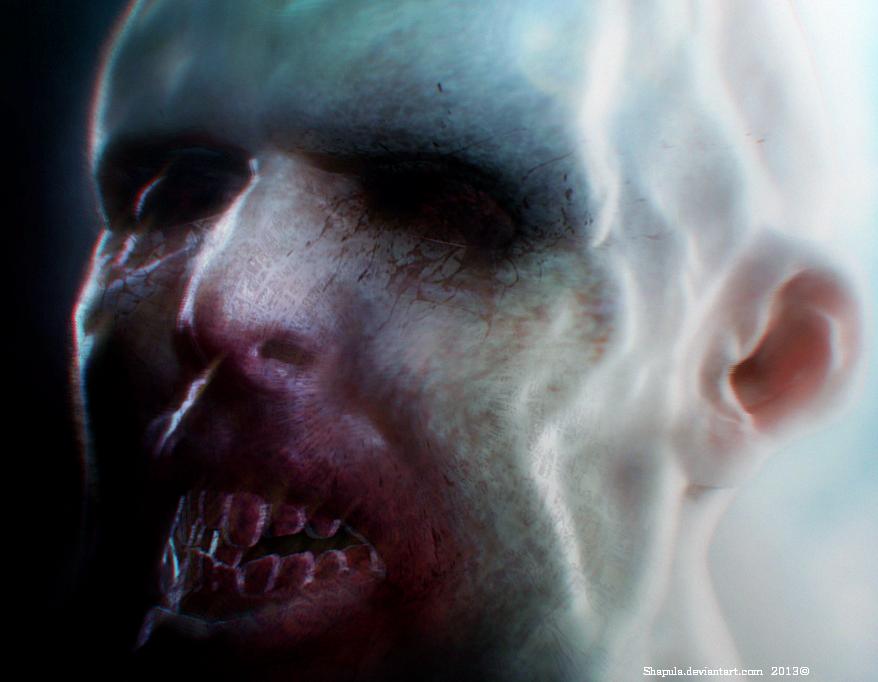
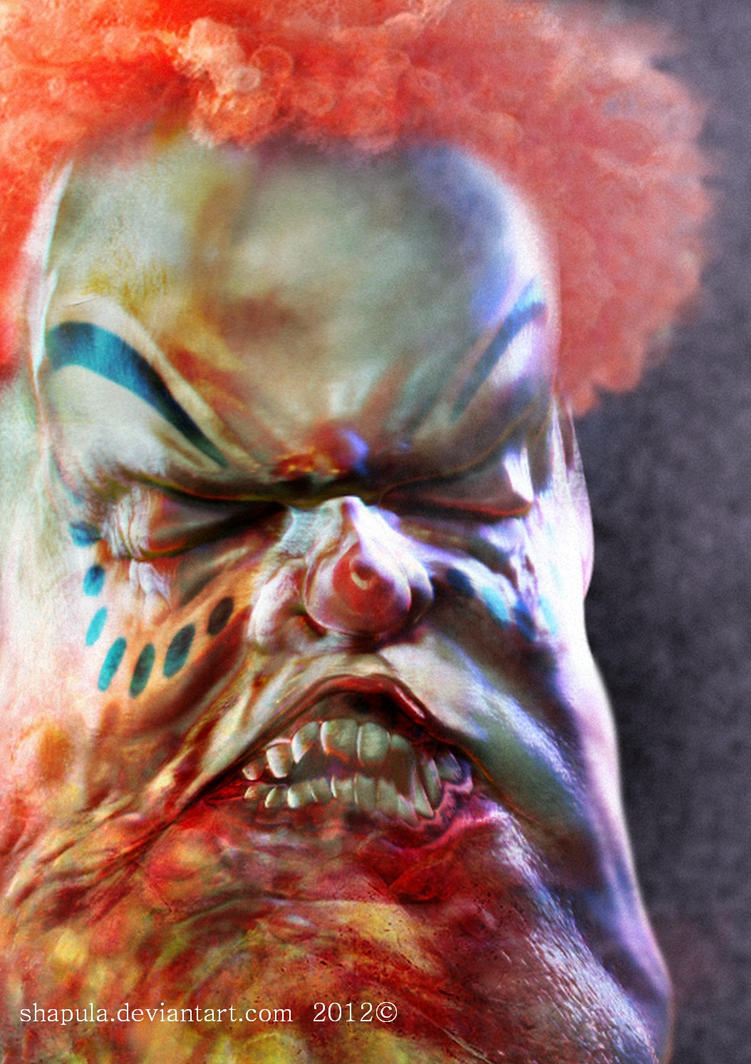
The Filmmaking Blog of DWARFED FILMS



I'm not a big fan of hyper-realistic pictures that look like photographs in general - and that's not just because I don't have the skill or talent to do such stuff! - but I do like pictures that have a certain amount of detail or rendering that makes them seem like they could exist in the real world.
This got me thinking as to what exactly the 'right' amount of detail is, something particularly relevant to matte paintings fro film which need to integrate seamlessly into real footage.
As far as detail is concerned, I don't think its a mathematical formula of a certain number of strokes, but more a sense of what suits each individual piece - and should come after mood and feel in the pecking order of importance.
Some stuff can seem incredibly solid but on closer inspection is made from a few perfectly placed brush strokes, a bit like an Impressionist painting.
This reminds me of a story I read about in a book once where a movie matte painter (the guys who paint fake backdrops such as landscapes or skies to be superimposed on live-action footage) spoke of the time a producer visited the set one day to inspect the painting of a ship that the guy was working on.
The producer said that it looked real when he walked in the door but as he got closer it just looked like what it was - a painting. The producer 'advised' the matte painter to add more details such as nuts and bolts to the ship painting. The matte painter nodded and smiled, knowing that it was unwise to argue with a Hollywood hotshot producer.
The producer left the building satisfied, but the matte painter knew well that adding details would ruin the illusion and actually make the painting look fake. So he left it untouched and the shot appeared in the movie (don't remember the name) as it was and was entirely convincing - so convincing that the producer actually took credit for his own involvement in making it so real!
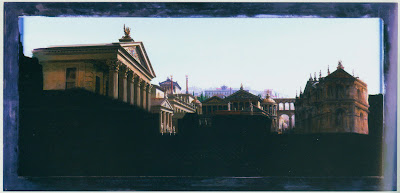
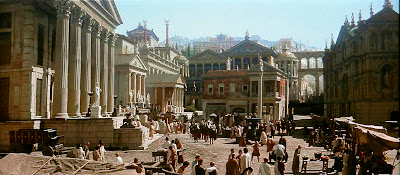


*** You can read a brilliant back-story to the matte paintings in EARTHQUAKE at this website http://nzpetesmatteshot.blogspot.com/2010/08/earthquake-it-really-was-event.html ***

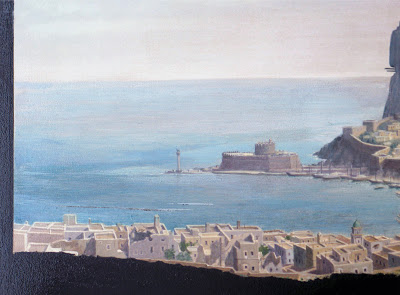
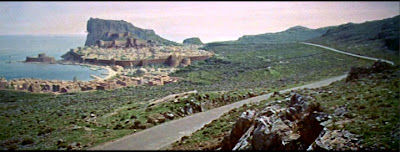






In fact, the cinematic look can be recreated relatively easily once you are aware of what something ‘cinematic’ actually is (See my previous posting “Inspirational Cinematic Photography” for more)!
The key elements to a ‘cinematic’ image are as follows:
Let’s look at each one a little closer.
1: Shoot 24p using 180° Shutter Rule: What the hell does this mean? Well, you should shoot at the speed that cinema films are shot at, which is 24 frames per second (actually 23.976 frames per second). ‘24p’ means 24 frames per second progressively. You should use this frame rate as opposed to ‘24i’, which means 24 frames per second interlaced. Interlacing means that the picture contains two fields, which doesn’t look nice and is synonymous with the ‘DV look’ (not nice). The simple point is that you should aim to shoot at 24p because that is what looks most cinematic.
The 180° Shutter rule is an even more complicated thing to explain and you can find lots useful resources on the web explaining it with diagrams and stuff. They describe how you should use a shutter speed of twice your frames per second.
For mere mortals like you and me (you are mortal, aren’t you?) this really means that when shooting footage at 24p you should set your shutter speed to 1/48 of a second – or as close as, which is normally 1/50 of a second on DSLR’s.
When shooting slow motion footage at 60 frames per second (FPS) on your DSLR you should use a shutter speed of 1/120th of a second.
If you have a camera that shoots at, say, 100 fps then you would shoot at 1/200th of a second. Just double your FPS speed to get your shutter speed.
So, shoot at 24fps and use a shutter speed of 1/48 of a second (or 1/50th is that is the closest setting you can get on your camera). It’s best to stick to this rule and not think too much about it. It works and that’s what matters.
2: Shot Framing: The single most important aspect of a cinematic image is how the shot is framed. If you want to make something that looks more like something you’d watch in a cinema you need to make sure that what appears in your frame doesn’t look like your granny’s holiday snaps from last year.
Try not to put your main point of interest in the centre of the frame. Use the rule of thirds and try to have your main point of interest located where any of the vertical and horizontal lines converge.
Only put your main point of interest dead centre by stylistic choice or for impact.
When composing your shot, make sure that the viewer’s eyes are not distracted by unimportant details. Aim for a clean frame where nothing gets in the way of the viewer understanding what’s going on in the shot, for instance if a background is too busy blur it out with a shallow depth of field (see ‘4: Depth of Field’ for more).
Vary your angles. Don’t shoot everything from the same viewpoint (unless this is a stylistic choice for impact). If you are filming a dog or a kid, get the camera down at their level. If you are filming a vast expanse of land, get the camera up high to get a vantage point.
(See my previous posting on “Where to Put the Camera” for a discussion on camera placement)
3: Lighting: A cinematic image looks lush and moody. To create this lush and moody look does not require a huge lighting set-up. Actually less is more. Filming a character lit by a single practical lamp while leaving the rest of the room in shadow instantly adds production value. Good lighting is less lighting. Shadows are your friends. Use lighting to direct attention to your main point of interest.
Use backlighting to create silhouettes.
Expose correctly. Leave some information in the shadows, avoid blown out highlights like the plague. And remember, the image you get in camera just needs to have an adequate range of exposure; you can do all sorts of tricks in grading to make your blacks really black or add tints and filters and make countless other adjustments.
4: Depth of Field: The depth of field defines the area of focus in your image. Being able to control what is or isn’t in focus has a huge impact on cinematic style and emotional connection to the subject matter/character.
A wide depth of field means that the vast majority of your image will be in focus. This is useful when trying to show a wide vista (a landscape or cityscape, for example) where you need to ensure that everything is in focus. F-stops of f.8 or more makes the camera lens’ iris smaller and ensures more of the image is in focus.
A shallow depth of field means that only a very selective area will be in focus while the rest of the image will be blurry. This is used to separate the foreground from the background for instance and is an essential tool when filming people during dialogue sequences so as to make sure that the viewer is focused on the actors and not distracted by something in the background. An F-stop of 5.6 or less allows this look.
The background takes on a blurry pattern that is called ‘Bokeh’. Different lens produce different types of Bokeh effects; some create more circular blobby patterns of light, while other’s make more hexagonal-style blobs.
Using a shallow depth of field is something craved for by independent low budget filmmakers for years in order to simulate the ‘cinematic look’. Before affordable digital SLR camera’s the shallow depth of field look was out of reach unless you were willing to splash out on a much more expensive camera.
But even if you only have access to a regular video camera you can still ‘cheat’ this shallow depth of field (or ‘blurry background’) look by zooming in as much as possible while positioning your camera further away from your subject. This makes the background more soft and is a way to get a less impressive, but still effective, shallow look.
5: Grading: No matter how well you light and expose your footage in production, when it comes time to assemble it all in the edit you will notice that, colour-wise, it wont look very impressive.
But don’t fret: this is where grading your images comes along to make everything look just like you imagined it should! Grading is basically adjusting the hue, saturation and contrast of your footage so that first it matches and then secondly it allows you to create a ‘look’ that defines your cinematic style.
A great way to practice grading is by opening a still picture in any basic image editor (IrfanView, for instance) and going to the menus and selecting ‘Image’, then scrolling down to ‘Enhance Colors’. This will give you options for adjusting brightness; the colour balance of the Red, Green and Blue channels separately; Contrast, Gamma Correction; and Saturation. A few subtle tweaks of the RGB values and the Contrast will have a massive impact on your image.
Increasing contrast, then increasing the Red and reducing the Blue values makes the image appear ‘warmer’.
Increasing the contrast, then reducing the Red value and increasing the Blue makes it ‘cooler.
Try it!
This is basically what you’d be doing in After Effects (or whatever editing/colour correction software you are using) in order to make your images come alive.
Stu Maschwitz’s book The DV Rebel’s Guide has a step-by-step process guide to colour correction that lays out in simple English how to go about turning an average looking shot into something truly cinematic.
Basically you need to firstly ensure that all your clips match. This means giving a general colour correction to your footage so that all the shots seem to be part of the same whole – and this is why it’s important to ensure when you are shooting footage that you get a good, clean exposure and not set out to complete a look in camera. The computer is where you should be fiddling with the look.
After making sure that all your clips match up well, you then move on to the creative stage: giving the footage ‘the look’. When you think of a Tony Scott movie you immediately think of over saturation and high contrast – this is his ‘look’. That’s just one example, go find yours.
When all these five elements are put together you are well on the way to getting the true cinematic look.
Of course none of this matters a bit if you have a crap script, awful sound and poor acting, but people judge things on first glance visually and ensuring that your film can compete in cinematic quality terms with the other films out there will prevent it looking amateurish and cheap.
These five points will instantly add production value to your work and without a huge deal of effort or stress. Ignoring them would be a futile waste considering how they require relatively little effort.
- Shane
(Images taken from Google.com/images. All images copyright of respective owners)
Well, it all depends on whether you are writing a script that you intend to make yourself or whether it is going to be made by somebody else.
I'm going to focus on talking about writing a script that you are making yourself.
I should warn you that this is another one of my long postings ;)
Ok. First things first: you should write in your own voice and manner. Don't go all flowery with the language just for the sake of it. If you are a straight-talking type person you should write in that way.
Remember, you are not writing a novel, you are simply trying to lay out the blueprint/set the tone for a movie.
You need to get the feeling of the story across and include references to any characters, locations, props you need...but no more.
The script is the blueprint.
It is not the be all and end all. It is an in-between stage to get your ideas from inside your head and present them in a clear and concise manner.
Let's take an example.
Say you have thought up a scene where a man walks into a bar and sits at a table.
It is a basic scene, but can be staged in countless ways.
You need to ask yourself the following questions:
- What is the purpose of the scene? How does it further the story?
- What is the character's motivation? Why is he here?
- Where are we? What does the location look like? What time of day does it take place?
- How can I get across the mood/feeling in a way that reflects the idea's in my head?
- How can I communicate this idea in a way that makes sense to the viewer?
The last point is the most important: the need to respect the audience and ensure that your idea's are conveyed in a way that they will accept and enjoy.
Let's move on to the process of getting it all down on paper.
One writer may keep it extremely basic and write:
1: "The man enters the bar. He walks across the floor and takes a seat at the far end. He orders a drink from the barmaid."
Another may write:
2: "It's late in the night, near closing time. A man in a tattered shirt and baseball cap pushes through the door, pausing briefly as a neon Budweiser sign hums and flickers behind him. He moves forward, head held low, through the almost empty place. Reaching the far end of the bar he draws back a wooden stool and sits down awkwardly. Raising a finger he orders a beer from a barmaid wiping down the counter top".
A third writer may put it like this:
3: "A wide interior establishing shot of a bar at night. Cut to a mid shot of man in cap pushing through the door. Pull-in as he pauses briefly in the doorway. We pull-in real tight for an extreme close up, revealing just his eyes and an out of focus Budweiser sign behind him. We cut to an overhead wide shot as he moves forward, head held low, through the almost empty place. Cut to a low-angle shot as the camera dollies behind him as he reaches the far end of the bar. Cut to a medium close up behind the bar as he draws back a wooden stool and sits down. Raising a finger he orders a beer. Cut to an over the shoulder shot of the man (with him filling most of the frame) as we see a barmaid wiping down the counter top".
Which one to use?
- The first one gets across the general idea but it lacks any emotion. It is flat. Boring. Dull.
- The second is descriptive and creates a mood that the first lacks.
- The third is descriptive and features camera placement ideas.
Despite number 3 having the inclusion of descriptions of camera moves and set-ups, I still believe number 2 is the best overall.
Having lots of intricate camera moves worked out in advance is fine when you know exactly the location you are going to be shooting in like the back of your hand. But you can get easily bogged down in simply recreating shots based on a plan rather than using your intuition and gut feeling which often leads to far superior outcomes.
I used to always over-write my scripts; every single camera movement described in precise detail.
But do you know what? It took the fun out of actually shooting stuff!
As far as I was concerned, the film was virtually already made on the page and the act of actually filming it was a tedious chore.
A script needs to include enough information to get across the feelings required yet still leave wiggle room when shooting.
You should be inspired by the script to go out and shoot.
Including certain essential camera moves/placements in ok, but you shouldn’t kill the story flow by breaking it up all the time with technical jargon that doesn’t enhance the story-telling.
Besides, you can use storyboards for this purpose if needed. And it’s far easier to have a quick glance at a picture than it is to make sense of a bunch of words trying to describe the angle and height of the placement of a camera!
A much more important element to include in a script is sound.
I’ve written before on the blog about the importance of sound in film, and it’s something that should be thought about at the script writing stage.
“An icy wind whistles through the alleyway, scattering a clanking tin can along the street” and “a throbbing beat resounds in Dave’s head, lub-dub-lub-dub, before he collapses to the ground with a mighty oomph” are just a couple of examples of how sounds play a vital role in bringing a script to life.
The name of a song/band/act a character is listening to in your story should be included instead of simply typing “John listened to a song”.
That tells us nothing! The line “John listened to Beethoven/Metallica/Tellytubbies” gives us an insight into the fascinating character of ‘John’!
Even if you don’t have the rights to use a particular song/artist you should still include it in the script. Who knows, you might get lucky and get permission to use that Beatles song you really wanted (Paul McCartney could be in a good mood that day). But even if you don’t, you can always use piece of royalty-free music that has a similar sound and will work just as well, if not better. Plus, because film is an audio/visual medium it should be planned to make use of the effectiveness of sound during the pre-production phase and not just concentrate on pictures.
An editor will always use a temporary soundtrack when piecing together a movie so as to find the correct rhythm of cuts; a scriptwriter should never ignore the power of music and sound either.
Including music references throughout your script will immediately add more life and character to your story.
This includes the use of sound effects where needed.
Let’s say your lead character is firing a gun during a getaway sequence: writing “John fired the handgun” is boring. But “John fired the handgun. Krackkkk!” lets the audience better visualise the feel of the weapon’s power.
Now lets get to wordiness. (yes I know I am one to talk!)
The average script breaks down as one page = one minute of screen time.
So a 90-minute movie would be roughly 90 pages long (when written in the standard Hollywood format).
You’re probably thinking that if you start adding all these descriptions of sounds and stuff like that you’ll end up with an un-doable 1000-page script!
This is where script editing comes into play.
Be selective in the amount of words you need to get your story across (says the man who has been busily typing all this!). You don’t need to describe every single detail of the rivets in the side of the ship in your Titanic-themed story. But if your story is about how some badly inserted rivets contributed to the sinking of the ship then you should be all means go all out and describe them in detail.
The whole thing is dependent on context: what you write is significant insofar as it moves the story forward and contributes to the tale.
A good script is like one of those little model buildings that architects have made-up when showing off a new development. It should be well made so as to convince viewers of the viability of a project and show a proposed depiction of what the finished job might look like. But it is an intermediary, a simulation of what the finished project might be like. It is not the finished goods - just like a script’s job is to be the solid foundation of a movie, something to inspire filmmakers on their journey to produce their best work.
Happy writing!
(all images from google images. Copyright of their respective owners)